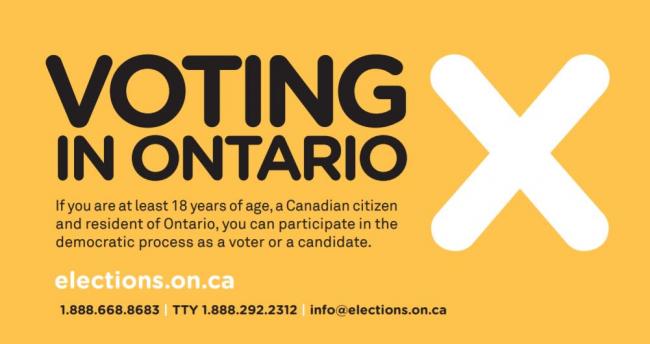
Canada: Elections Ontario to use electronic voting machines and voter lists in Jun 7 polls
Ottawa, May 10 (IBNS): The use of electronic voting machines and voter lists for the first time in Jun 7 Ontario elections, would help speed up both the voting and ballot-counting process, media reports said.
In most of the ridings in Ontario, voters’ paper lists would reportedly be replaced by an electronic version called e-Poll Book.
“The public has an expectation as a modern society to expect modern services and this is what we’re trying to do,” Cara Des Granges, who provides strategic policy and communications advice to executives and organizations, said.
When the voter arrives at the polling booth, voter’s notice of registration card would be scanned by a machine.
An official would then reportedly give the voter the ballot to be filled and returned to the official, who would put it through the tabulating machine.
During the Whitby-Oshawa riding on the Feb. 11, 2016 byelection, counting of ballots by the new machine took 30 minutes compared to 90 minutes by hand, reported Elections Ontario.
“We’re hoping this will be much more efficient for the voter,” said Des Granges. “Getting results should be faster and the technology is proven to be more reliable than tabulating votes by hand.”
The report also said the new technology would help with another election issue of staffing.
“Elections Ontario is increasingly unable to find the required number of polling officials,” wrote Greg Essensa, the province’s Chief Electoral Officer in the byelection report, titled “Proposal for a technology-enabled staffing model for Ontario provincial elections.”
According to the estimates of Elections Ontario, due to electronic voting machines and voter lists on Jun 7 elections, it would need about half of the polling officials compared to 2014 elections, Des Granges said.
But the new technology, official reports said, has its own faults.
Due to the connectivity issues by some e-Poll Books, the staff had to revert to the paper lists.
In other times, some of the scanners did not function, an issue which could not be resolved by the staff.
As a result the machines will be available in about 50 percent of the voting locations, but will serve 90 percent of the electorate.
(Reporting by Asha Bajaj)
Images: Elections Ontario/Twitter, Greg Essensa/Twitter
Support Our Journalism
We cannot do without you.. your contribution supports unbiased journalism
IBNS is not driven by any ism- not wokeism, not racism, not skewed secularism, not hyper right-wing or left liberal ideals, nor by any hardline religious beliefs or hyper nationalism. We want to serve you good old objective news, as they are. We do not judge or preach. We let people decide for themselves. We only try to present factual and well-sourced news.







